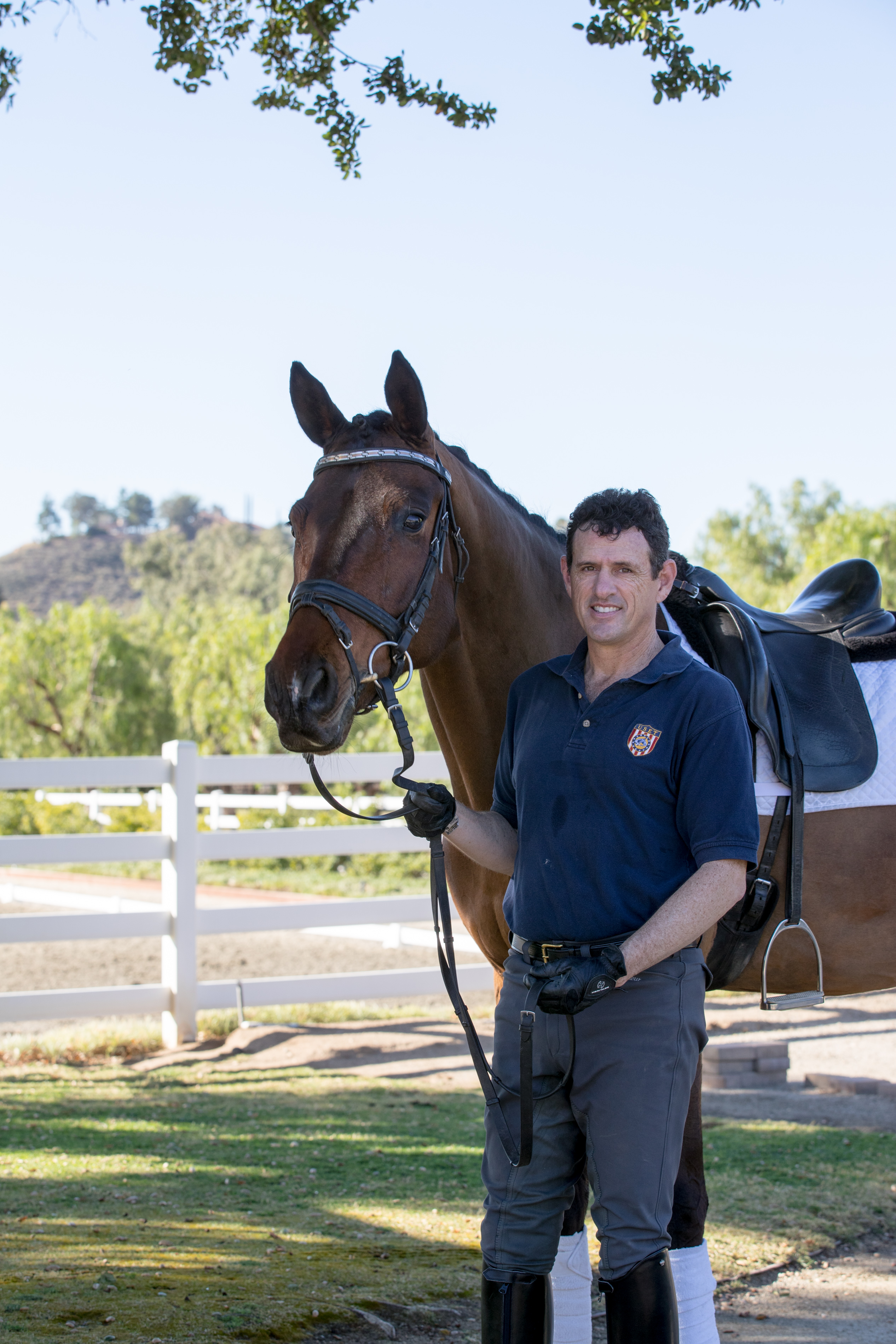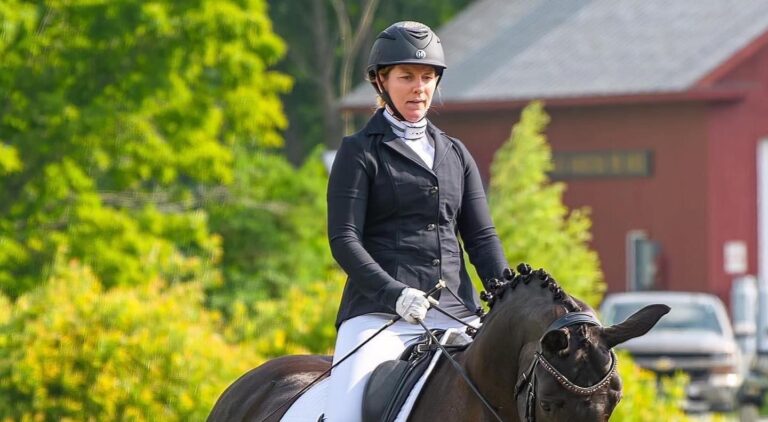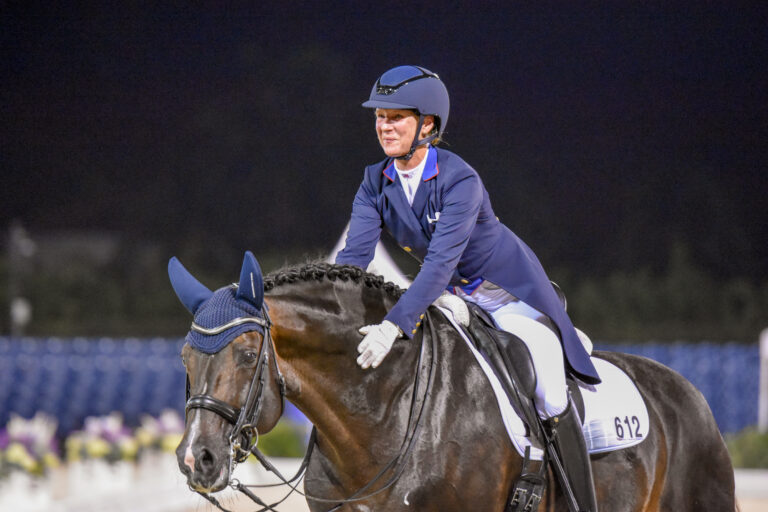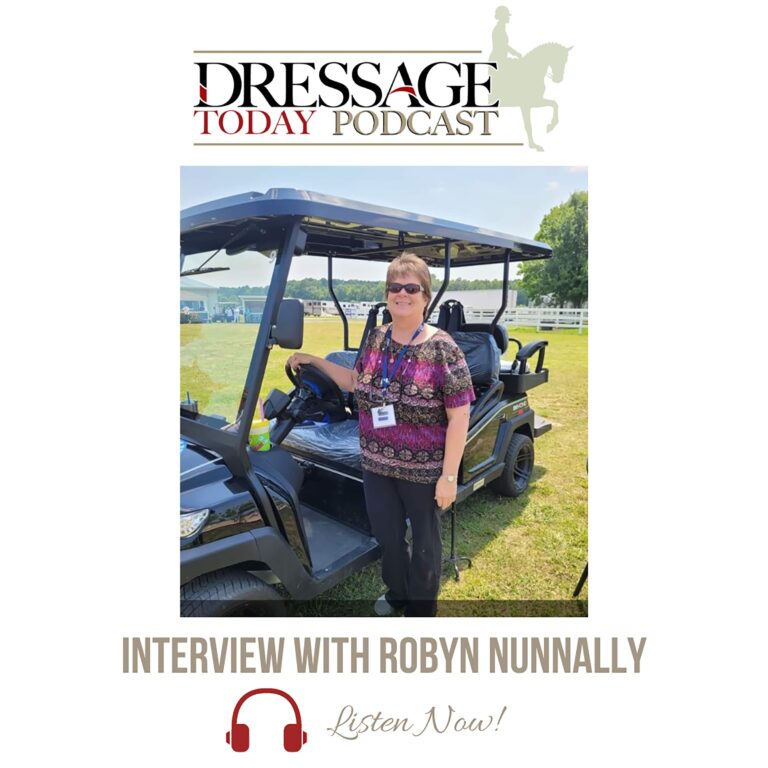
Competing abroad is not for everyone. We simply don’t have that many similar U.S. shows to prepare us for the European experience. The competition is tough, and it can be difficult for the horses as they can be tired from traveling and change of feed. But I firmly believe our country needs to send two 5-, 6- and 7-year-olds to compete there every year. The experience is invaluable. We need to see their level of riding in person and see the quality of their horses so we can grow from that.
Partous. The first horse I competed at the FEI World Breeding Championships for Young Horses (WBFSH) was the Dutch Warmblood, Partous, in 2003. He was 6 and difficult. We didn’t always see eye to eye. At that time, there were only three U.S. qualifiers. Now we qualify through CDIs. We were at the only one on the West Coast, and we needed to score 8.0 (out of 10) or higher to qualify. The qualifier was at the Flintridge Riding Club, and I had decided to do a Second Level test the day before just to check how he would be in the ring. Half way through my test, Partous noticed people walking on a hill above the arena and suddenly he stopped and froze. I couldn’t move him! He was just standing there with his head straight up in the air. It felt as if anything I did might get me killed. I lost all my confidence for the next day, and as you can imagine I was extremely worried. So, I made the decision to wait until the show was over at 11 o’clock that night and ride him for one hour. We worked on transitions—just trot–walk and walk–trot, over and over until I got him on my aids and rideable.
The next morning my plan was to get up and school him a few hours before my test, but I overslept. When I got on him to warm up, he was exactly where I left off the night before. I couldn’t believe how great he felt. I kept his neck low, and if you’d watched him in the warm-up you would have said that he didn’t look like anything special.
Then came my ride time, and he was amazing! I’ll never forget the feeling. His trot felt like he never touched the ground, his walk stayed relaxed and his canter had a lot of ground cover while managing to get all of his flying changes. It was a special moment when he received 8.0 and qualified for Verden in Germany (the location of the WBFSH that year).
Brigadier. In 2006, I qualified Brigadier, an American Warmblood, for WBFSH. He was owned by Deena Smith of Lenexa, Kansas, and bred by Page Hines Athan. I taught clinics at Page’s place and during lunch she would have a book of stallions on the table and she would ask me, “What about breeding to this stallion?” One of the stallions was Batido who we had in training in our barn at the time. He was a little bit old fashioned, but Page really liked his bloodlines so she bred a 15.2 Pinto mare to him and out came Brigadier who grew to 17.2 hands.
Deena bought him as a foal and he grew up in Kansas and came for training as a 4-year-old. In the beginning I didn’t think he was that special but the more he worked the better he got. His particular strength was in the flying changes. As a 5-year-old, he placed third in Kentucky at national championships. Through the next year he got much stronger and at the Flintridge qualifier he finished second behind Breanna, the horse my wife [U.S. Olympian Kathleen Raine] rides. Breanna scored 9.0 and Brigadier was second with 8.2.
Silberpfeil. The third horse was the Hanoverian Silberpfeil (barn name is Silver). We bought him from [legendary German trainer] Johann Hinnnemann as a 3-year-old. Anna Wood, who works for us, rode him for the first year, then I took him over as a 5-year-old. In 2015, at the Lamplight qualifier, we had real trouble. The first day he was quite naughty and ended up 12th in the first test. The second day we got our act together and moved from 12th to second place, finishing fourth overall.
During his 6-year-old year, I started teaching him flying changes. Within a few weeks he really started to figure them out. In 2016 I asked Joh what he thought about trying to qualify Silver for the WBFSH, now in Ermelo, the Netherlands. Joh said, “why not?” The decision was made, but I knew I was at the bottom of Mt. Everest. I began making regular trips down to U.S. Olympian Christine Traurig for lessons. With the help of my wife and Christine we started to chip away.
Now the qualifications are stricter. I had to score 8.2 or higher in both the preliminary and final tests at a CDI, then be approved by our national federation to compete there. I had to get him rideable and on my aids so I schooled him without a whip. This really paid off at the first CDI, and we scored 7.5 and 7.6. I was happy. It felt like a good start.
The next qualifier was at the Del Mar National two weeks later. He felt great and was absolutely with me. He received 8.2 and 8.3. I couldn’t believe it. We had done it. We were going to Ermelo again. In addition, Silver just finished second at the California Dressage Society’s Horse of the Year awards. And he was second in the USDF’s Fourth Level Horse of the Year in our regional finals. I think the next thing we will work toward is for the developing Prix St. Georges at Lamplight.
David Wightman is a Grand Prix rider, teacher and trainer at his Adventure Farm in Murietta, California. He has a busy clinic schedule around the country and has coached many Young Riders nationally and internationally, including taking them to top placings in the Under-25 division in Europe. In 2017, along with his wife, U.S. Olympian Kathleen Raine, he coached Alyssa Doverspike and her Hanoverian gelding, Darius 555, to win the prestigious U.S. Young Horse Championship for 5-year-old dressage horses. He met Kathleen when they both worked for Olympian Hilda Gurney. After five years, the couple married and began their own teaching and training business. He has trained with Johann Hinnemann, Dennis Callin and Christine Traurig.











